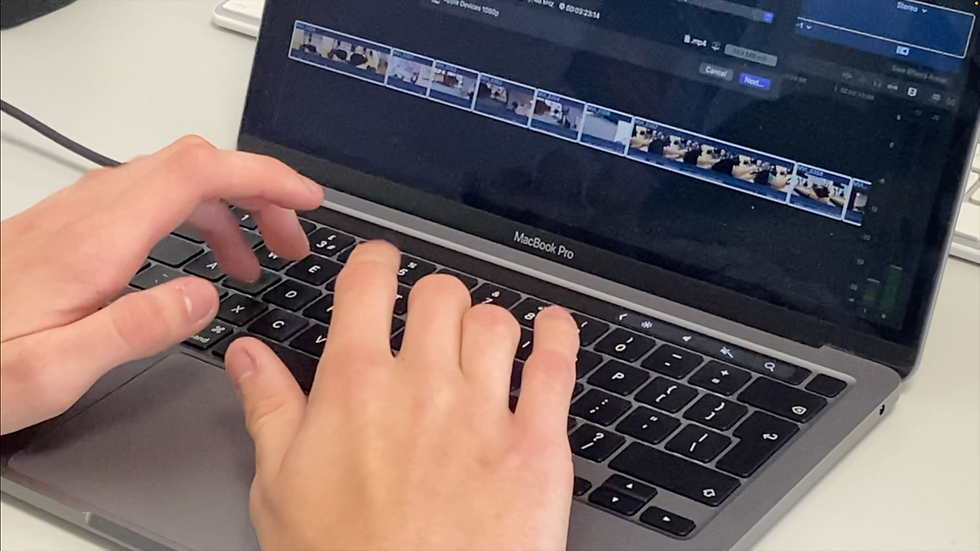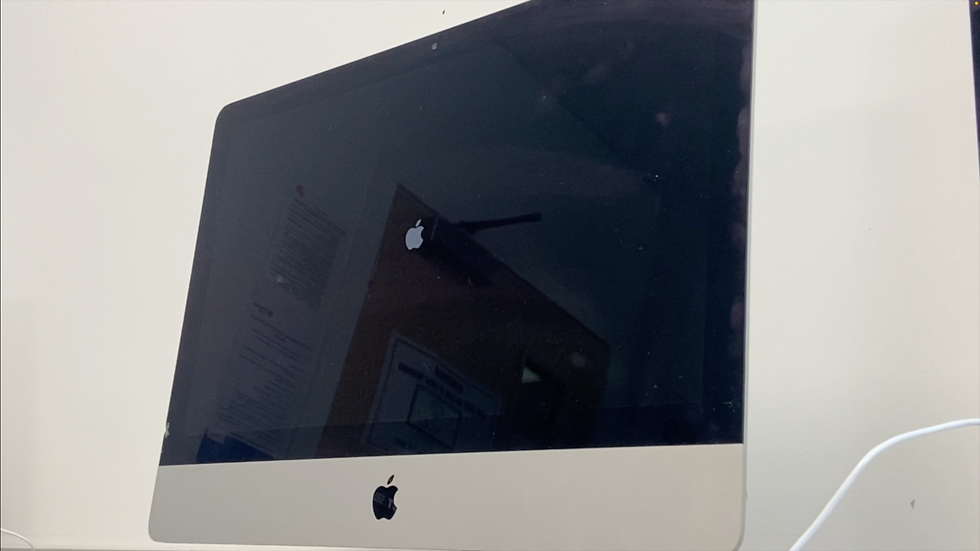Production Journal - Filming the Documentary
- romanoghirardello6
- Oct 28, 2022
- 6 min read
Updated: Feb 21, 2023
Throughout the entirety of filming the documentary, there were multiple bouts of filming, some of which are to be included in the final cut of the documentary and some of which have been rejected for various reasons.
In this blog post, I shall take a look at all of the filming that I have done for my documentary and consider what went well, what could have gone better and in general, revisit the entire process of filming my documentary, among other things.
Trying Out Different Techniques (05/10/2022)
The first segment filmed throughout the entire project was the segment involving trying out different filming techniques. To further elaborate, I considered the best sorts of audible and visual techniques to use for my documentary to make it more interesting, particularly when it came to B-Roll and keeping the production enticing to the audience and fleshed out throughout the entirety of the duration of the media product.
The Clock Shot
The first and arguably easiest shot I tried out was one of a ticking clock on the wall of my media classroom. This shot did in fact end up making it into the final production, to represent how time is running out to save our planet and that the harrowing prospect of climate change will wait around for absolutely no-one. Shots of ticking clocks are commonplace in many news reports, as well as other documentaries and non-fictional television productions.

The Typing Shot
Another shot that also made it into the final video, the typing shot is of one of my peers at college typing words on their laptop keyboard, which I wanted to be included as B-Roll when talking about how much dependent human beings are on technology in the modern day. I thought it to be a logical and welcome shot given the subject matter.

The Computer Shot
In the same vain of humans and technology, a computer booting up was another shot that I considered to be a good idea to include as B-Roll when talking about how much technology is used by humans in the modern day. The reason that I highlighted this, is due to the fact that becoming more dependent on technology drills home the fact that human beings require products, most of which are harmful to the environment. It is almost definite that in any educational institution, you will find computers in the classroom, or at least one. They are considered to be the most convenient tool that can be had in a place of education, with all of the knowledge of the world also at one's fingertips, thanks to the revolutionary invention of the internet. Ultimately, with apple products being on large production lines, using lithium batteries and materials that do not bio-degrade, they were just one of many examples of the unsustainable nature of products that human beings consume in general.

The Slow-Motion Shot
I wanted to try a slow-motion shot, as they are a popular and widely-used technique, not so much in the world of documentaries, but certainly when it comes to film in general. I attempted this, to see if it would work in the final cut of my documentary. Whilst talking about the product and the consumer and the effect that this has on our environment, I was curious to see if one of the most widely-used products in the world, the car, would be a welcome shot, driving down a road in slow-motion. This shot however, was not used in the final product, truth be told I saw no place for it and felt that it did not really have any correlation with the rest of the shots in my documentary.

Perhaps if I were making a "city symphony" style of documentary, then slow-motion shots of vehicles would work well. However, in the documentary I made, I doubt that it would have worked.
Test Interview (10/10/2022)
When it had become apparent that the class should start filming for their documentaries, I had not yet secured an interview, but was eager to try out techniques in lighting and in shooting when it came to filming an interview. I decided to carry out a test interview with one of my peers, with another helping out with lighting.

The goal was to carry out a rough interview to not only get some practice, but also, to display my planning stages for the documentary. This was indeed as a training exercise, a success. However, unfortunately the file simply could not be found on the SD card once we had recorded the interview and the footage was lost.
I stepped in and recorded my own backup interview completely by myself which was, due to the lack of planning, not made to the same quality of the previous interview, but was sufficient as serving as an example of a practice interview.
Client Interview (12/10/2022)
After scheduling a day before on Tuesday the 11th October, I had the opportunity to interview a client from the Strode Sustainability Group by the name of Tom Bradley. Tom and I undertook the interview in a classroom in B Block at our college, it was empty and well-lit and served as a good setting for interviewing a member of a group situated in and around our college. B Block also happens to be where the Strode Sustainability Group undertake their meetings and so, we felt it to be the perfect location to film the interview.

Filming for the interview took around ten minutes and setting up was very brisk indeed, due to the fact that I had practised shooting interviews prior to recording the one with my client. The interview was a success and I walked away with a lot of footage to use for my documentary, only a fraction of which was used, however when filming, it is important to film everything that you possibly can, so that you have plenty of shots to choose from when it comes to editing and putting your production together. Tom and I have since considered working together in the future, with the whole process going very well indeed.
Documentary Shoot (18/10/2022)
Eventually, it came time to do a live shoot of my documentary which involved shots of me talking to the camera and getting most of my A-Roll footage completed. I requested that one of my peers from my media class assist me in attaining this footage and acting as my camera-operator, they accepted and so we were ready to go.
We ventured out into our college car park to attain the shots that we wanted, with the main shot that we went out to shoot being one involving me walking down a long path with a bin at the end, talking about how little things that we do can have a large effect on our planet, with the subject matter being littering.
By the end of the shot, I put an empty drink bottle into the bin, which is visible throughout the whole shot, with the camera being static and showing me slowly coming towards the bin, to eventually place the rubbish into the bin and walk out of shot.

We achieved this shot by placing the camera just behind the bin, as well as off to the side so that I was visible and would eventually be stood right next to it by the time I had finished my monologue. The camera was mounted on a tripod to retain stability and we had to ensure that none of the students faces were clearly visible when filming, as we would have to ask for their written consent which we did not really have the time to do. To avoid this, we waited until nobody was around and then, we recorded. This did however take multiple attempts, as many people came from all sorts of directions, impeding on our shot which we did eventually get in the end.
The Litter Pick (25/10/2022)
Arguably the simplest part of the documentary to film, the litter pick involved me being followed with a camera, picking up litter on the streets of Glastonbury. I was followed around with a hand-held camera with the operator simply walking behind me, which made the filming feel very stripped back and lightly-produced, which in my opinion, made the production feel more like a documentary, as such conventions are commonplace in a film of this genre.

These shots reminded me of (to a greater extent) the shaky camerawork in a scene from 'Bowling for Columbine', when Michael Moore and his camera-operator vigorously and abrasively enter a K-Mart, with the unrefined camerawork making the scene feel very real, untouched by production and very in-your-face. This helps to make the documentary feel close-to-home, believable and to an extent home-made, as the lack of glamorisation and production in the media product, creates a sense of resonation between the viewer and the producer of the media product, helping the audience to have more of a human opinion on the producer and conveys them as just another person, which is often desired in Michael Moore's documentaries, as he gives a very "man-on-the-street" approach.

Comments